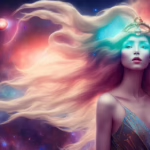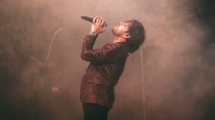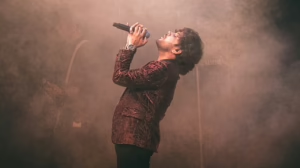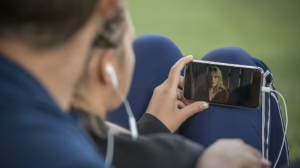Exploring Diversity: The Growing Representation in Film and TV
In the past few decades, film and television have become vital cultural artifacts that reflect and shape societal values. Historically, the industry has often been critiqued for its lack of diversity, as many stories were told through a narrow lens that frequently marginalized or excluded various groups. However, recent years have seen a significant shift towards more inclusive storytelling. This article explores the growing representation in film and TV, examining its importance, the achievements made, and the challenges that remain.
The Importance of Representation
The representation of different cultures, identities, and stories in film and television transcends mere visibility; it plays a crucial role in shaping societal narratives and fostering empathy. Research indicates that diverse representation in media can lead to broader acceptance of varied identities in society at large.
Psychological Benefits
People often find validation and recognition through seeing their own experiences reflected in mainstream media. For example, studies have shown that children of color who see themselves represented positively can improve their self-esteem and reduce feelings of isolation. Moreover, when audiences view diverse characters in roles outside of stereotypes—such as doctors, leaders, and innovators—it challenges preconceived notions and fosters a more nuanced understanding of different cultures.
Societal Influence
Film and television serve as a mirror to society, often reinforcing or challenging existing societal norms. Diverse representation fosters inclusivity, inviting audiences to empathize with experiences outside their own. Media portrayal has the power to influence public opinion and generate discourse around social issues, giving voice to marginalized communities.
A Brief History of Representation in Film and TV
Historically, the film and television industry has seen numerous waves of representation, many of which were defined by systemic racism, sexism, and homophobia. The era of the "Hollywood Ten," for example, saw the industry blacklist artists based on their political beliefs, primarily affecting those who were already marginalized. Iconic films often portrayed minority characters in ways that were flat, reductive, or stereotypical, focusing on harmful tropes rather than complex narratives.
Despite these challenges, there have always been groundbreaking works that pushed against the tide. Films like Guess Who’s Coming to Dinner (1967) and shows such as The Cosby Show (1984) played essential roles in broadening the discussion around race and representation. However, the progress made felt incremental, often stalling due to systemic barriers within the industry.
The Turning Point: Recent Developments
As societal attitudes shift, so too has the landscape of film and television. The late 2010s and early 2020s marked a clear turning point. Streaming platforms expanded their reach and democratized the content creation process, allowing for diverse voices to emerge. Below are some pivotal moments and achievements in diverse representation.
Rise of Streaming Platforms
Platforms like Netflix, Hulu, and Amazon Prime have contributed to a more diverse media landscape by allowing creators from various backgrounds to tell their stories without the constraints traditionally imposed by major studios. For example, the success of Master of None and Pose highlights how indispensable narratives centered around LGBTQ+ and POC communities have become in mainstream media.
Award Recognition
The Academy Awards and Golden Globes have historically been criticized for their lack of diversity. However, recent years have seen an increased effort to recognize work from underrepresented groups. Parasite (2019) made history as the first non-English language film to win the Best Picture Oscar, shifting the conversation about international cinema and the stories it can bring to the forefront. Similarly, films like Moonlight (2016) successfully showcased narratives around Black identity and sexuality, highlighting the importance of nuanced storytelling.
Authentic Storytelling
Authenticity in storytelling has gained traction, with productions increasingly prioritizing hiring writers, directors, and cast members from within communities they aim to represent. This shift has allowed for more nuanced characters that accurately reflect the lives and challenges faced by real individuals. Shows like I May Destroy You and films like The Farewell emphasize the significance of authentic storytelling by centering the experiences of marginalized voices.
Challenges Still to Overcome
While the advancements in representation are commendable, significant challenges remain. The film and television industry is still grappling with issues such as typecasting, the glass ceiling for directors and producers from diverse backgrounds, and a tendency for “tokenism” rather than genuine inclusion.
Tokenism
Tokenism refers to superficial inclusion efforts where minorities are included to appear diverse without genuinely integrating their stories or experiences. This practice can often lead to caricature-like portrayals rather than authentic narratives that resonate with audiences. More critically, tokenism can undermine the complexities of identities and experiences, resulting in reductive storytelling.
Systemic Barriers
Despite some progress, systemic barriers persist in hiring practices. Directors and producers from diverse backgrounds are often given fewer opportunities or placed in roles that limit their storytelling potential. Studies show that the "pipeline" for diverse talent is still riddled with obstacles, from networking barriers to biased hiring practices, which diminishes the overall diversity of content presented to audiences.
Audience Reception
Even as representation becomes more widespread, differences in audience reception can also pose challenges. Certain sectors of the audience may resist narratives that challenge their preconceived notions or fear that inclusivity might infringe on traditional narratives—resulting in backlash against diverse projects. The critical reception of works like Black Panther and Crazy Rich Asians shows that while diverse stories can achieve commercial success, they can also face scrutiny from audiences who are less familiar with those narratives.
The Future of Diversity in Film and TV
The future of representation in film and television is a subject of both optimism and caution. As awareness of diversity issues grows, so too does the demand for more inclusive stories. Future trajectories can be inspired by past achievements, while also identifying areas for growth.
New Voices and Stories
The next frontier for representation involves not just adding diverse characters to existing narratives but creating wholly original content centered around marginalized communities. Efforts to explore intersectionality—where gender, sexuality, race, and other aspects intertwine—will allow for more accurate and fulfilling portrayals of complex lives.
Audience Engagement
Increased audience expectations for representation will continue to challenge creators to thoughtfully engage with diverse experiences. Engaging in participatory storytelling that invites audiences to share their experiences can contribute to a richer understanding of society as a whole.
Industry Standards
To combat issues like tokenism and systemic barriers, industry standards must evolve. Organizations advocating for diversity are calling for accountability in hiring practices, equitable funding for projects led by marginalized groups, and the establishment of mentorship programs that nurture fledgling talent. Inclusion riders—a contractual stipulation that requires projects to include a certain number of diverse cast and crew members—are also gaining traction as a form of accountability.
Embracing Technology
The rise of virtual reality and immersive experiences presents new opportunities for diverse storytelling. Creative technologies can enable audiences to engage with stories in entirely new ways, potentially broadening perspectives and eliciting empathy.
Conclusion
The growing representation in film and television marks a critical evolution in how stories are told and who gets to tell them. By amplifying diverse voices, we challenge long-held stereotypes and broaden our understanding of the world. While there is still much work to do—confronting systemic barriers, dismantling tokenism, and creating authentic narratives—the progress made thus far is an acknowledgment of the changing tides. The call for meaningful representation will only intensify, ultimately enriching our collective storytelling landscape. As we look to the future, the hope is that film and television will continue to reflect the richness of human experience in all its varied forms.
This article includes references to significant studies and notable works that can find further details in academic journals and reliable media sources. For more information, readers can consult articles from reputable platforms like [modern_footnote_source_link].


























Add Comment